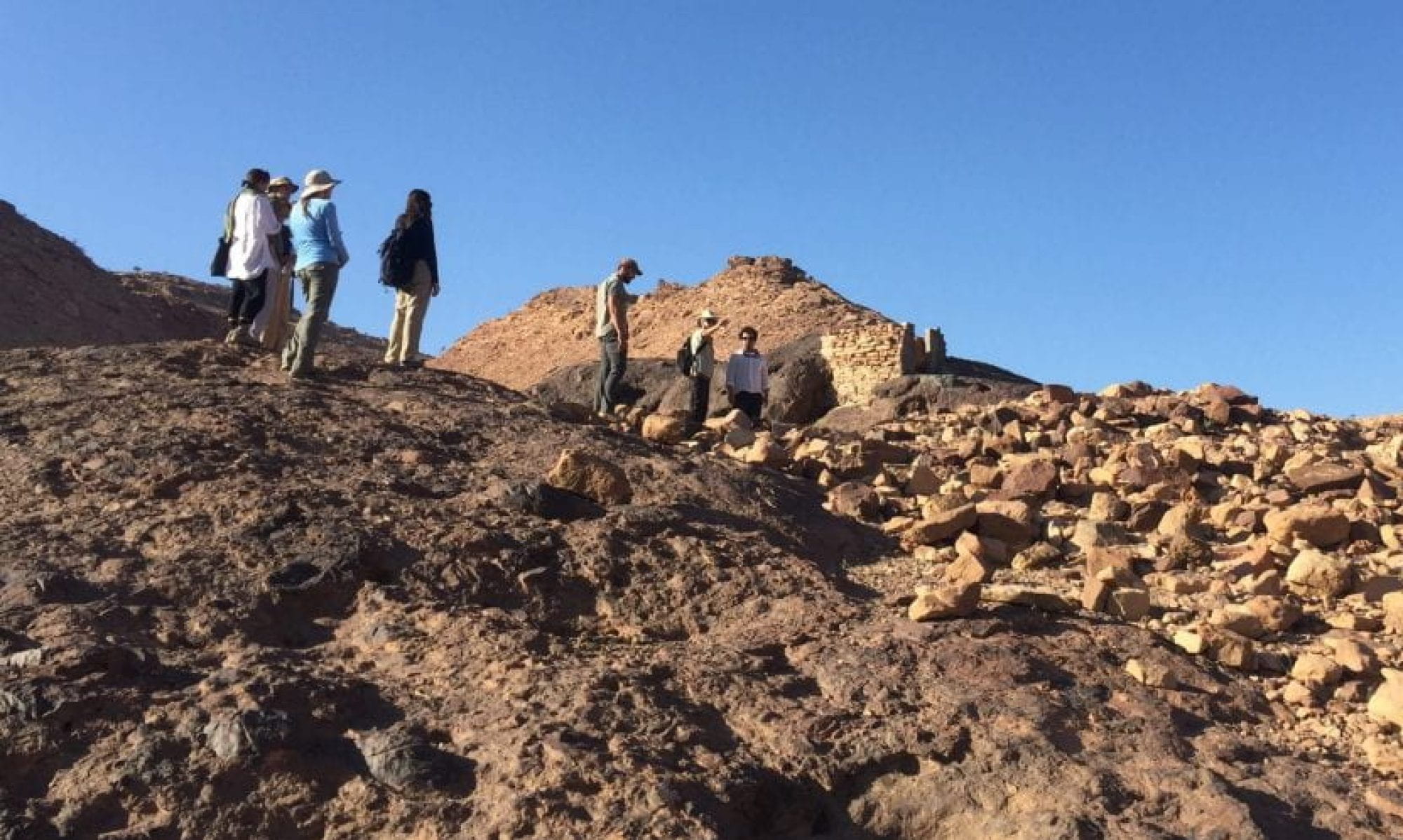

The site of Abydos covers an area approximately 10 square kilometers on the edge of the western desert in southern Egypt. Components of the site include settlement areas, cemeteries with occupants ranging from kings to commoners, and temples. The occupation of Abydos spans more than five millennia, with the earliest known graves dating to the prehistoric period, around 4000-3500 BC, but it was during the late Predynastic and Early Dynastic periods (c. 3150-2650 BC) that the site first rose to real prominence. During this time the rulers of Abydos increasingly took on the trappings of kingship, and it was these early kings who first unified Egypt into a single state. Most of the kings of the Early Dynastic period were buried at Abydos in an area now known as Umm el-Qaab (“mother of pots”), beneath the looming cliffs of the western desert. The same kings who were buried at Umm el-Qaab built monumental temples closer to the cultivation, in an area we now call the Northern Cemetery. These mud-brick temples are largely destroyed, but that of the last king of the Second Dynasty, Khasekhemwy, still stands as an imposing monument in the landscape of modern Abydos.
Although the kings of the Old Kingdom (c. 2650-2160 BC) were buried beneath pyramids nearer the ancient capital of Memphis, across the river from modern Cairo, Abydos never lost its association with early kingship. Indeed, this association became the basis of the belief that the god Osiris, king of the dead, was buried at Abydos. The cult of Osiris flourished from the Middle Kingdom (c. 2055-1650 BC) until the Roman Period (c. 30 BC – AD 395) and conditioned both royal and private activities at Abydos. Most notable was the construction and maintenance of a large temple to Osiris in the town site, and a great procession that annually left the temple and reenacted the funeral of Osiris at his supposed tomb, really the renovated tomb of one of the First Dynasty kings at Umm el-Qaab. This procession, which is described in ancient texts, went through a wadi or shallow valley that cuts across the desert of Abydos, ultimately ascending into the cliffs of the Sahara. Kings from many periods of Egyptian history augmented or even replaced the Osiris temple, and scores of ordinary people built chapels along the sides of the wadi to associate themselves with the festival of Osiris. Indeed, the pilgrimage to Abydos to take part in the Osiris procession became a fundamental part of funerary religion for Middle Kingdom and later Egyptians. Even those who likely never made such a pilgrimage portrayed this voyage on the walls of their tombs. Only in the Ptolemaic period (332-30 BC) did the pattern of the Osiris procession change, but even then the importance of the god at this site remained paramount.

The connection of Abydos to Osiris can be seen more broadly than just the Osiris temple, procession, and related private monuments. Royal monuments at the site after the Early Dynastic period include two kings’ tombs, both with associated temples and towns, and multiple royal temples. One of these, the limestone temple erected by the New Kingdom king Seti I (c. 1294-1279 BC) is largely still standing. Its reliefs are considered some of the finest Egyptian art ever produced, and their content attests to the close affinity Seti felt for Osiris.
Abydos site overview • Brown at Abydos • 2008-9 season • Support for Abydos

